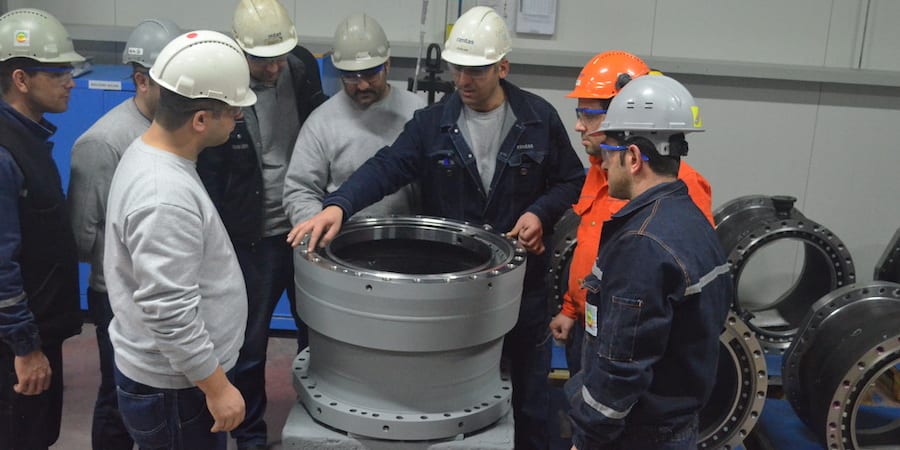
Lean marketing and the voice of the customer
FEATURE – What does it really mean to listen to the “voice of the customer”? This article discusses how lean marketing can help us to truly understand customer value and, therefore, increase our sales.
Words: Alessandro Martemucci, Lean Coach, Istituto Lean Management – Italy
Many sectors of the economy are seeing rapid changes in the markets they serve, in line with evolving customer needs and requirements. It’s clear that organizations need a new approach to deliver their products and services, one that is leaner, faster, and that ensures an optimal use of resources. Now more than ever, to consolidate or increase the revenue they generate, businesses will have to listen carefully to customer requirements – what lean thinkers call the “voice of the customer” (VOC).
But what does it mean to listen to the VOC? It means to develop an understanding of the following elements:
- Customer’s buying habits;
- Our way of retaining customers;
- Their general level of satisfaction;
- The products and services in our portfolio that create value for customers and delight them;
- What customers value most about our business;
- What customers dislike the most about it.
THE QUEST FOR INFORMATION
If you don’t have a functioning information flow in place feeding you data on the points listed above, you will have to act quickly – for example, through satisfaction survey – to learn about your customers (both existing and prospective ones) and their habits. Do your homework and you’ll gain extremely valuable information on problems you weren’t even aware of, customers’ opinion on your products, and assess the level of satisfaction and engagement of staff members and their performance. You will also be able to generate leads and test ideas for new products and services.
Analyzing customer satisfaction is a strategic activity, because the feedback we receive from people can help us understand where our competitive advantage lies (or hides), our strengths and our weaknesses.
But what’s the simplest, fastest and “leanest” way to listen to our customers?
Many organizations – especially SMEs – believe that listening to the voice of the customer is a costly and taxing endeavor, but it doesn’t have to be. In this day and age, there exist many tools to carry out online surveys, inexpensive if not entirely free, that give everyone the opportunity to identify customer value. It’s important, however, to remember a few golden rules that will help you obtain key information from your clients. This is something of a lean marketing approach applied to customer satisfaction, aiming to help you achieve the maximum value from your survey and get as much information from it as you can.
RULE #1 – Establish “S.M.A.R.T.” objectives
Your survey should have a clear goal, which – as the SMART acronym suggests – needs to be SPECIFIC, MEASURABLE, ACHIEVABLE, RELEVANT, and TIME-BASED. You need to know what kind of information you want to gather right from the moment you start preparing your survey questions.
In the initial stages, you will have to prepare and train those front-line workers who will be in direct contact with the customers – salespeople, promoters, sales managers, and so on. They will have to learn to listen to the customer and understand their changing needs, what they expect. They’ll also need to be able to recognize early signs of dissatisfaction, so that they can be addressed in a timely manner. This way, your front-line salespeople will become investigators, problem-seeking Sherlock Holmes’s.
If sales are dropping in an area of your business, for example, a customer satisfaction survey can help you understand why. You can carry it out to understand if, perhaps, something has changed that makes the product or service less attractive to customers, if people no longer perceive the product as value-added, or if a competitor has come up with a better offer. In the hospitality and healthcare industries, for instance, over the past year people have become much more worried about safety and sanitization than ever before.
RULE #2 – Start from general satisfaction, then go deep
It’s a good practice to start by focusing your survey on general satisfaction levels to identify high-level problems you can then zoom in on at a later stage as your analysis gets more and more granular. At first, you should strive for generic questions, to get a sense of how people perceive your product or service. If you start off too specific, you risk spooking customers and you won’t get honest feedback.
RULE #3 – Make the survey short and simple
The survey should feature simple keywords and questions that can be understood easily by survey-takers. Make your question too technical or complicated and you’ll typically get a superficial (more likely, wrong) answer. It’s also important to keep the survey short – no longer than five minutes – lest it will lose people along the way.
RULE #4 – “Less is more”
The fewer questions we ask people, the more likely it is they will answer the survey in full. Also strive to limit the number of open-ended questions, which are usually harder for people to answer and require a lot of effort. Make your survey-takers’ lives easy provide them with a set of questions that can help them to understand what they truly value. One or two open-ended questions are typically enough to tell you what challenges you can tackle first.
RULE #5 – Always contact different clients
While it’s good to carry out surveys periodically, it is important not to ask the same people to take part in a survey more than once or twice a year – to avoid bothering them. Whenever a customer doesn’t pick up the phone or doesn’t answer one of our texts, we miss an opportunity (imagine if they block our number out of frustration with our pushiness).
RULE #6 – Offer customers a gadget or reward for their time
Presents and rewards, no matter how little, go a long way showing customers the business values them and their time. Here in Italy, for example, McDonald’s gives out a €1 snack for free every time a customer answers a questionnaire. Hotels use a similar system to encourage guests to leave a review, perhaps in exchange for a discount on their next stay.

SOME REAL-LIFE EXAMPLES
A large company specialized in frozen foods used to receive complaints from customers on a daily basis, regarding anything from wrong pricing to damaged products. Sales agents, eager to please their customers, routinely insisted that the problems they dealt with required urgent attention and that it could only be solved by HQ. A short questionnaire was circulated among the sales agents, asking them about customer problems, their urgency (high = same-day resolution; medium = 2-3 days; low = 1-2 weeks) and what actions could be taken to address the issue. The answers revealed that only 5% of the problems were in fact urgent. In most cases, agents were able to suggest the solution to the problems and HQ only had to approve it. This way, customers were happier, because they received immediate attention, while the company was able to solve a number of pressing issues.

In an association of blood donors, we used a customer satisfaction survey to understand how to provide better value to people. The questionnaire revealed two things: 1) that the breakfast offered to donors after their donation was something people really valued, and 2) that young people would prefer being called in to donate later in the morning (it was nicknamed “sleepyheads’ donation”), at 10:30, so as to be able to sleep in. This improved the experience of donors, while limiting waiting time in the blood donation center early in the morning.
Surveys can also be used creatively as part of a company’s marketing strategy. IKEA and Decathlon, for example, display product reviews and 1-to-5 ratings as an effective marketing tool to convince buyers to purchase a certain product in their stores. Amazon Vine invites regular reviewers to publish their opinion on products that are yet to be put on the market, to generate curiosity and help buyers to make informed purchases. Vine reviewers get free products and the seller can’t in any way modify the reviews.
Some of the best inexpensive or free tools to measure customer satisfaction, both online and offline, include Google Modules, SurveyMonkey, polls on social media platforms like Facebook or Instagram, and Doodle. Check them out to get an idea they can fit your own circumstances.
So, how and when should you share your survey? Below are some ideas.
- After the purchase, packing a card with a QR code into the product box, leading to an online survey, or through an email or a banner on the company’s website.
- Placing a button on your website or e-store linking to a Google My Business account, where customers can leave reviews.
- Via a newsletter or other email communication.
- Through an SMS or a WhatsApp message.
- Recording a video testimonial with a customer.
Not only does this approach markedly reduce costs thanks to valuable customer feedback; it will also help your organization establish a lasting relationship with your customers. So, what are you waiting for? Start listening to your customers today!
THE AUTHOR

Read more


CASE STUDY – This insurtech venture has found in Lean Thinking a way to tackle its many scaling issues. It’s grown from two to fifty-five people in less than four years, ultimately thanks to a strong focus on quality.


CASE STUDY – With plans to double capacity year on year in its new precision machining business, a Turkish company found in lean a way to control growth by stabilizing old processes while new ones are introduced.


FEATURE – To lean out a training organization means to both transform its internal processes and integrate Lean Thinking in its educational offering: the story of ZingTrain.


GETTING TO KNOW US – We sit for a chat with the President of Institut Lean France. Not only has ILF created a vibrant community of lean CEOs in France; it also launched one of the most innovative lean events out there.

